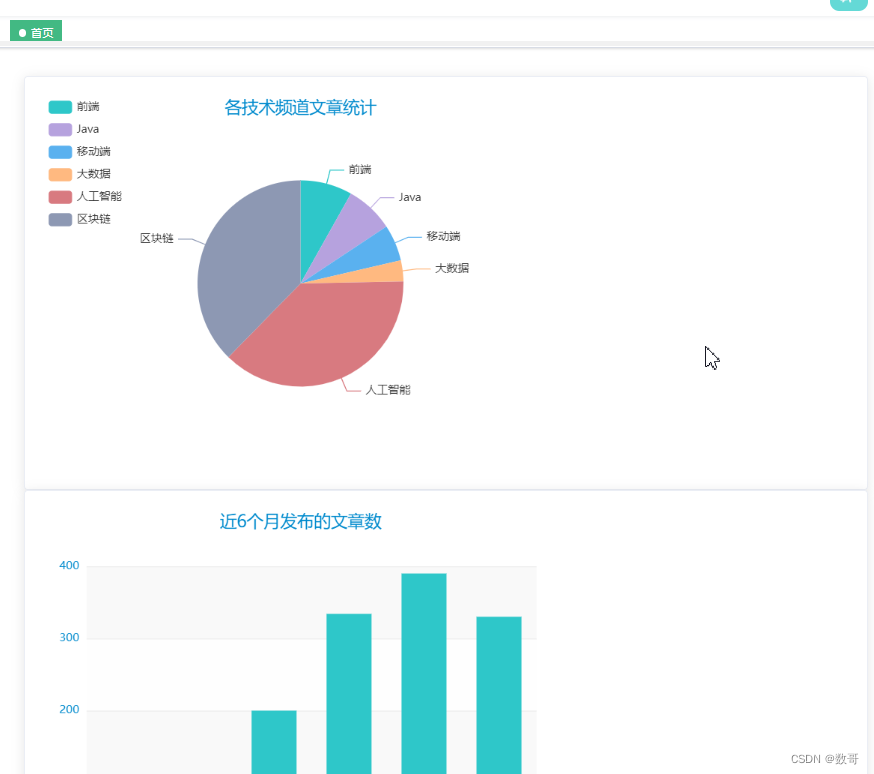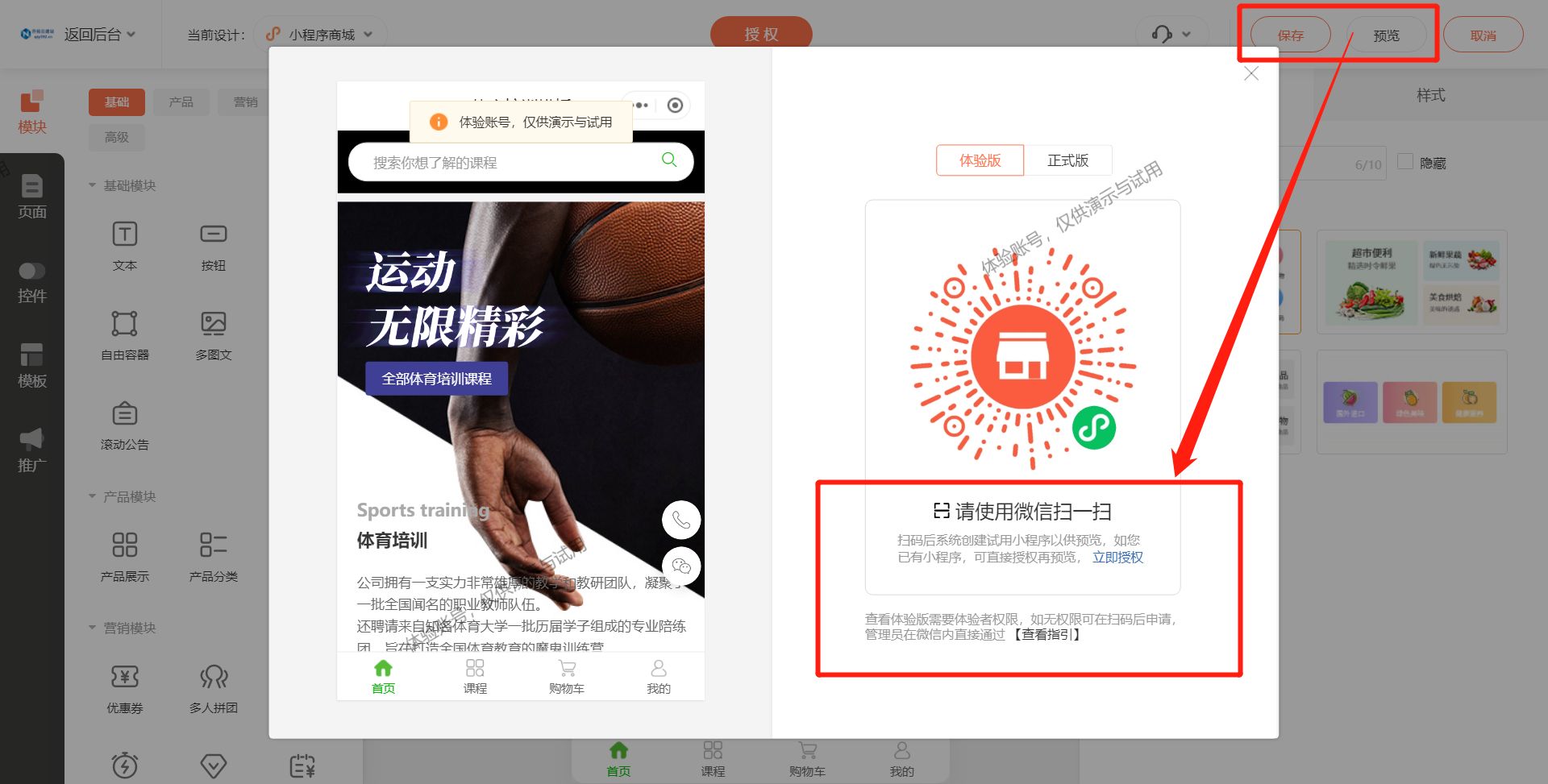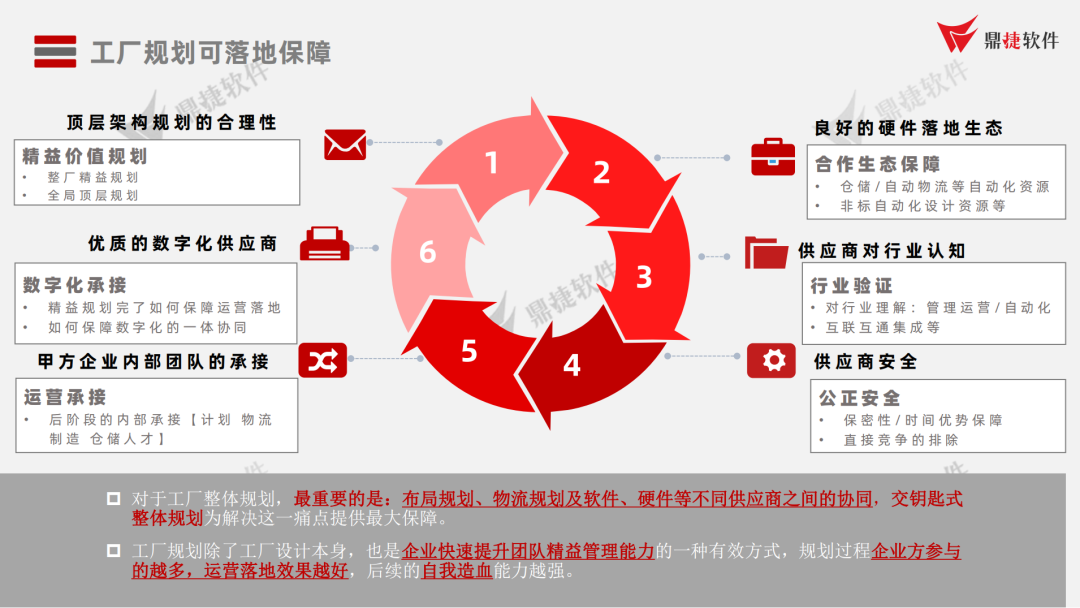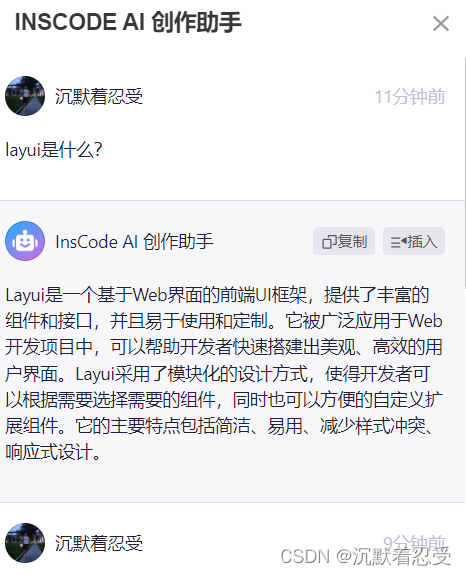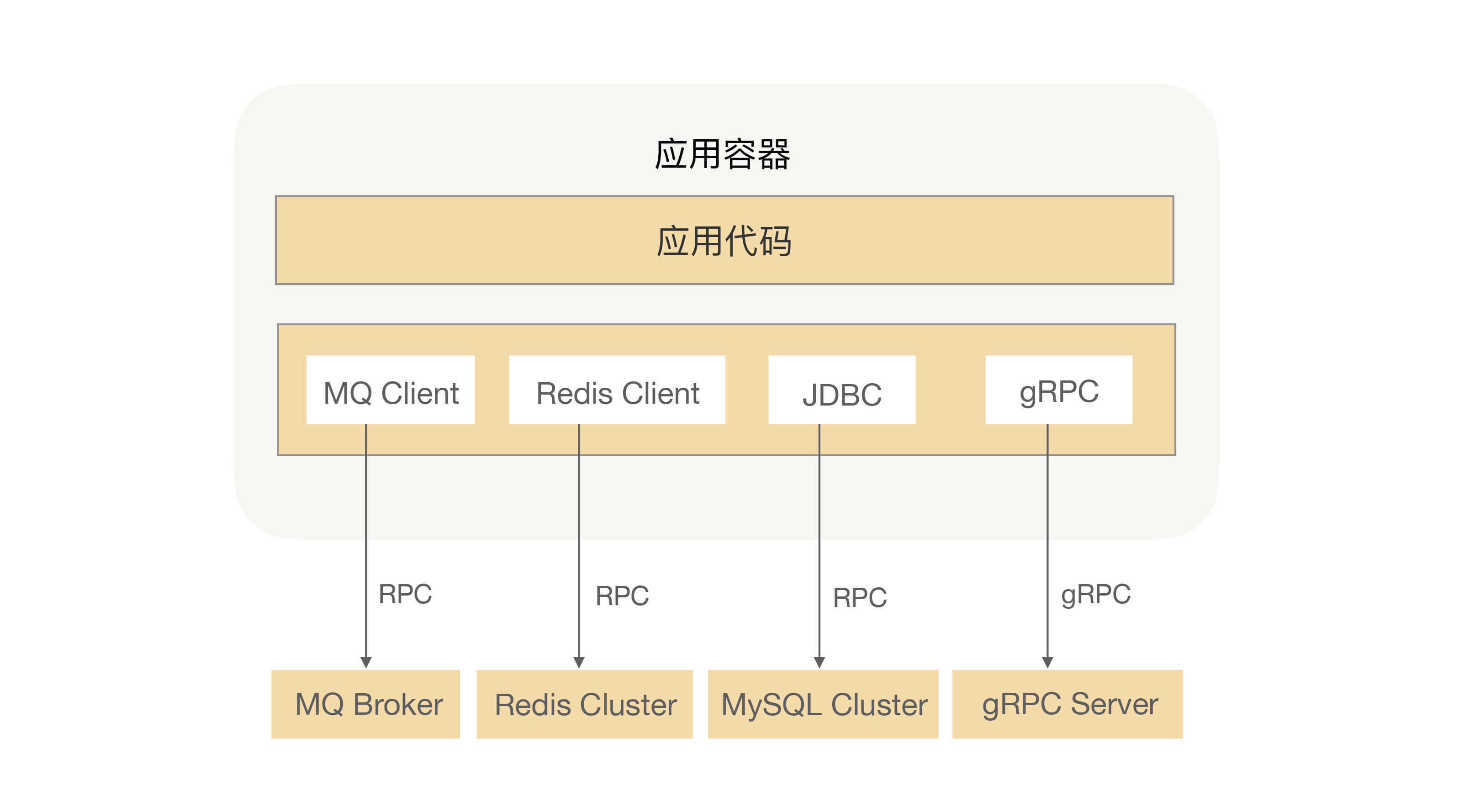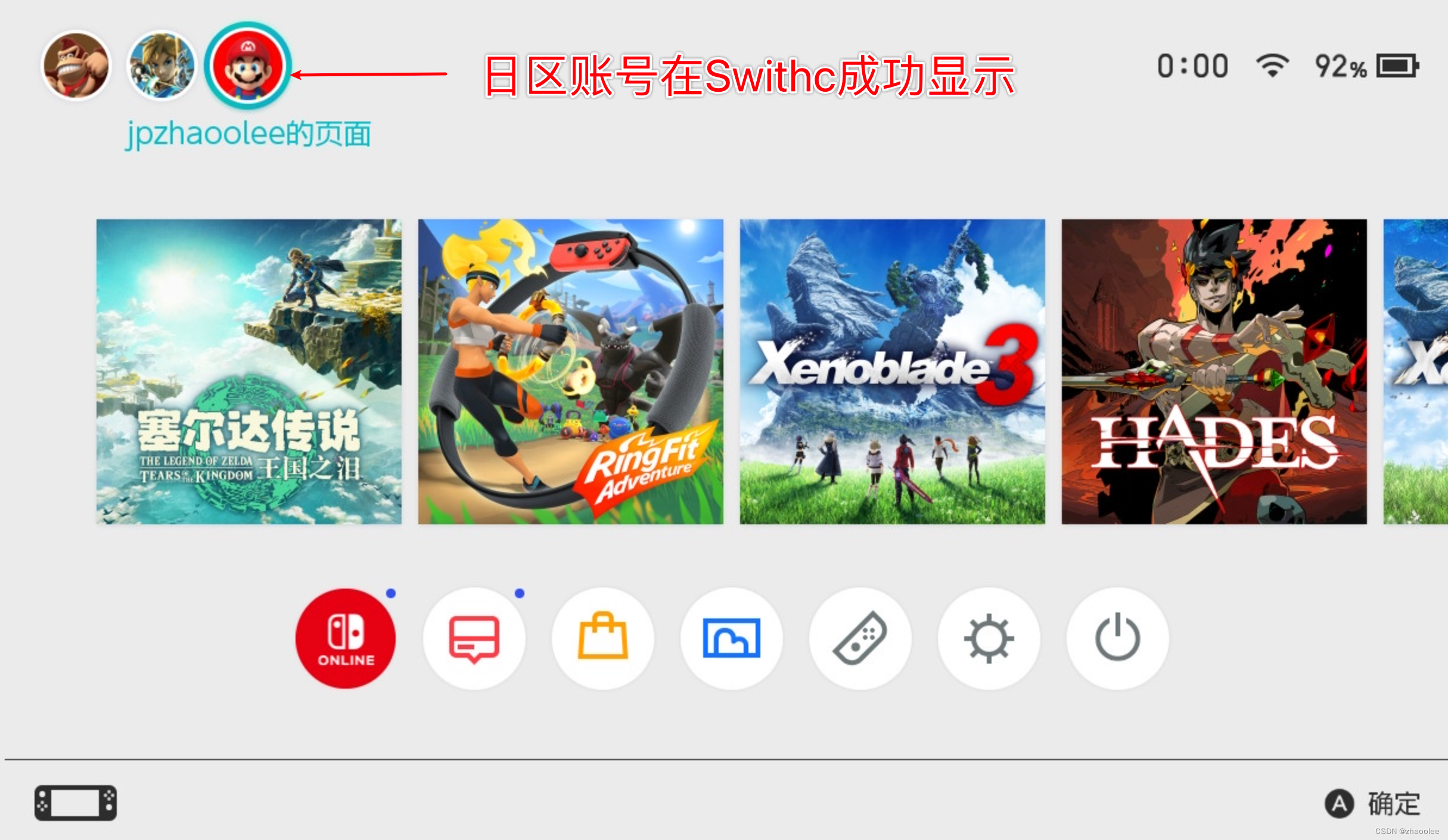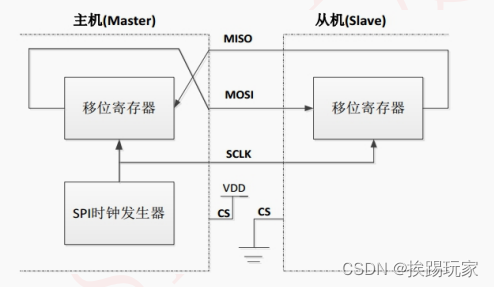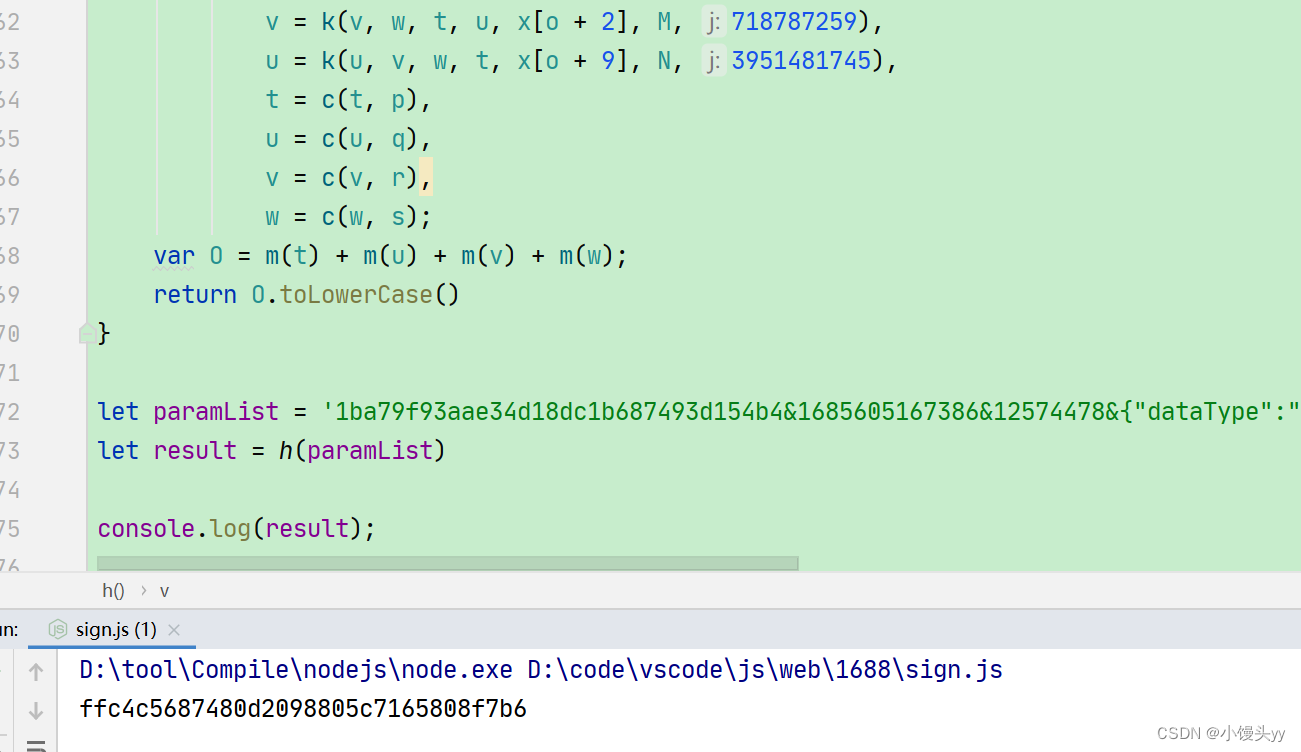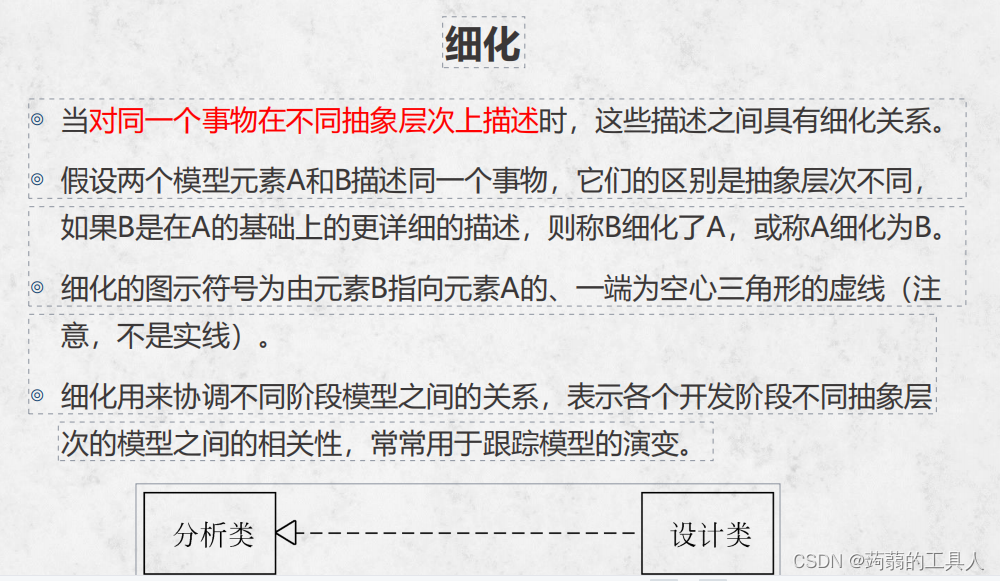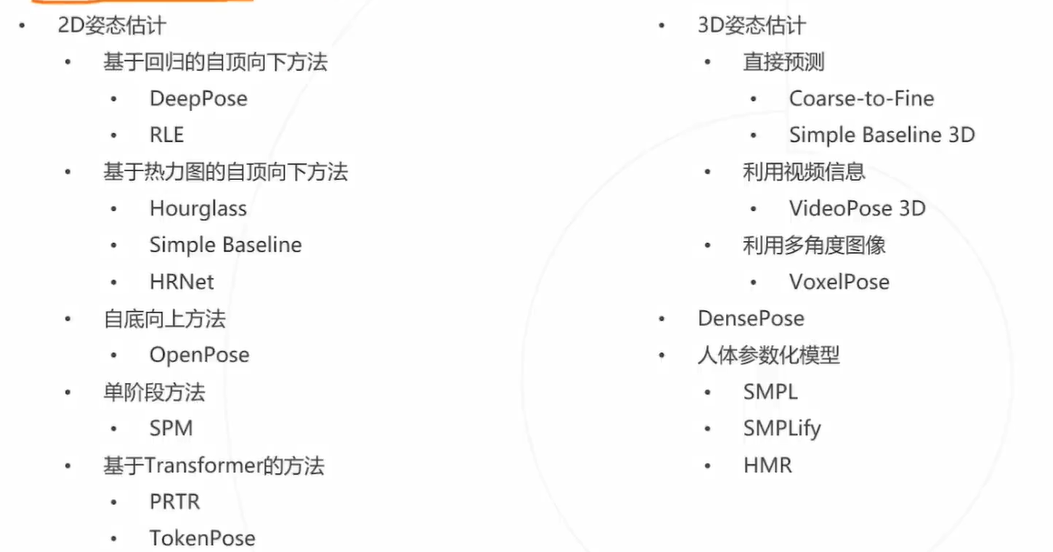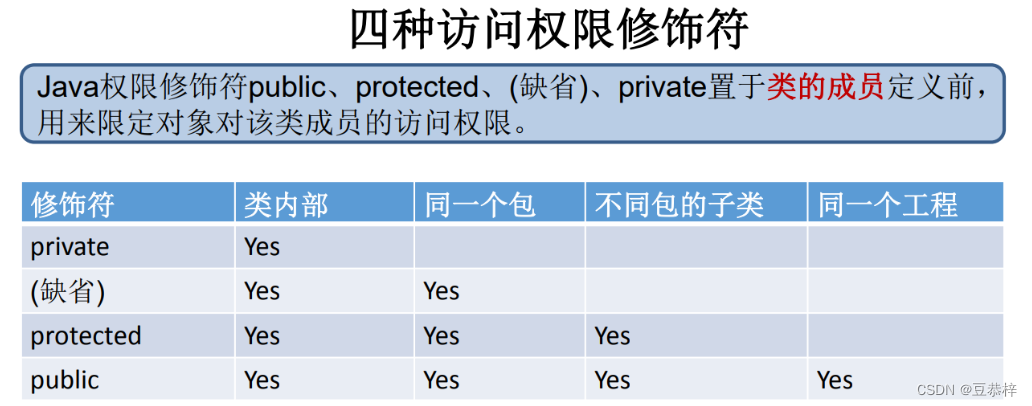Shiro高级及SaaS-HRM的认证授权
Shiro在SpringBoot工程的应用
Apache Shiro是一个功能强大、灵活的,开源的安全框架。它可以干净利落地处理身份验证、授权、企业会话管理和加密。越来越多的企业使用Shiro作为项目的安全框架,保证项目的平稳运行。
在之前的讲解中只是单独的使用shiro,方便学员对shiro有一个直观且清晰的认知,我们今天就来看一下shiro在springBoot工程中如何使用以及其他特性
案例说明
使用springBoot构建应用程序,整合shiro框架完成用户认证与授权。
数据库表

基本工程结构
导入资料中准备的基本工程代码,此工程中实现了基本用户角色权限的操作。我们只需要在此工程中添加Shiro相关的操作代码即可
整合Shiro
spring和shiro的整合依赖
<dependency>
<groupId>org.apache.shiro</groupId>
<artifactId>shiro-spring</artifactId>
<version>1.3.2</version>
</dependency>
<dependency>
<groupId>org.apache.shiro</groupId>
<artifactId>shiro-core</artifactId>
<version>1.3.2</version>
</dependency>修改登录方法
认证:身份认证/登录,验证用户是不是拥有相应的身份。基于shiro的认证,shiro需要采集到用户登录数据使用subject的login方法进入realm完成认证工作。
@RequestMapping(value="/login")
public String login(String username,String password) {
try{
Subject subject = SecurityUtils.getSubject();
UsernamePasswordToken uptoken = new UsernamePasswordToken(username,password);
subject.login(uptoken);
return "登录成功";
}catch (Exception e) {
return "用户名或密码错误";
}
}自定义realm
Realm域:Shiro从Realm获取安全数据(如用户、角色、权限),就是说SecurityManager要验证用户身份,那么 它需要从Realm获取相应的用户进行比较以确定用户身份是否合法;也需要从Realm得到用户相应的角色/权限进行验证用户是否能进行操作;可以把Realm看成DataSource,即安全数据源
package cn.itcast.shiro.realm;
import cn.itcast.shiro.domain.Permission;
import cn.itcast.shiro.domain.Role;
import cn.itcast.shiro.domain.User;
import cn.itcast.shiro.service.UserService;
import org.apache.shiro.authc.*;
import org.apache.shiro.authz.AuthorizationInfo;
import org.apache.shiro.authz.SimpleAuthorizationInfo;
import org.apache.shiro.crypto.hash.Md5Hash;
import org.apache.shiro.realm.AuthorizingRealm;
import org.apache.shiro.subject.PrincipalCollection;
import org.springframework.beans.factory.annotation.Autowired;
import java.util.HashSet;
import java.util.Set;
/**
* 自定义的realm
*/
public class CustomRealm extends AuthorizingRealm {
public void setName(String name) {
super.setName("customRealm");
}
@Autowired
private UserService userService;
/**
* 授权方法
* 操作的时候,判断用户是否具有响应的权限
* 先认证 -- 安全数据
* 再授权 -- 根据安全数据获取用户具有的所有操作权限
*
*
*/
protected AuthorizationInfo doGetAuthorizationInfo(PrincipalCollection principalCollection) {
//1.获取已认证的用户数据
User user = (User) principalCollection.getPrimaryPrincipal();//得到唯一的安全数据
//2.根据用户数据获取用户的权限信息(所有角色,所有权限)
SimpleAuthorizationInfo info = new SimpleAuthorizationInfo();
Set<String> roles = new HashSet<>();//所有角色
Set<String> perms = new HashSet<>();//所有权限
for (Role role : user.getRoles()) {
roles.add(role.getName());
for (Permission perm : role.getPermissions()) {
perms.add(perm.getCode());
}
}
info.setStringPermissions(perms);
info.setRoles(roles);
return info;
}
/**
* 认证方法
* 参数:传递的用户名密码
*/
protected AuthenticationInfo doGetAuthenticationInfo(AuthenticationToken authenticationToken) throws AuthenticationException {
//1.获取登录的用户名密码(token)
UsernamePasswordToken upToken = (UsernamePasswordToken) authenticationToken;
String username = upToken.getUsername();
String password = new String( upToken.getPassword());
//2.根据用户名查询数据库
User user = userService.findByName(username);
//3.判断用户是否存在或者密码是否一致
if(user != null && user.getPassword().equals(password)) {
//4.如果一致返回安全数据
//构造方法:安全数据,密码,realm域名
SimpleAuthenticationInfo info = new SimpleAuthenticationInfo(user,user.getPassword(),this.getName());
return info;
}
//5.不一致,返回null(抛出异常)
return null;
}
public static void main(String[] args) {
System.out.println(new Md5Hash("123456","wangwu",3).toString());
}
}
Shiro的配置
SecurityManager 是 Shiro 架构的心脏,用于协调内部的多个组件完成全部认证授权的过程。例如通过调用realm 完成认证与登录。使用基于springboot的配置方式完成SecurityManager,Realm的装配
package cn.itcast.shiro;
import cn.itcast.shiro.realm.CustomRealm;
import cn.itcast.shiro.session.CustomSessionManager;
import org.apache.shiro.mgt.SecurityManager;
import org.apache.shiro.spring.security.interceptor.AuthorizationAttributeSourceAdvisor;
import org.apache.shiro.spring.web.ShiroFilterFactoryBean;
import org.apache.shiro.web.mgt.DefaultWebSecurityManager;
import org.apache.shiro.web.session.mgt.DefaultWebSessionManager;
import org.crazycake.shiro.RedisCacheManager;
import org.crazycake.shiro.RedisManager;
import org.crazycake.shiro.RedisSessionDAO;
import org.springframework.beans.factory.annotation.Value;
import org.springframework.context.annotation.Bean;
import org.springframework.context.annotation.Configuration;
import java.util.LinkedHashMap;
import java.util.Map;
@Configuration
public class ShiroConfiguration {
//1.创建realm
@Bean
public CustomRealm getRealm() {
return new CustomRealm();
}
//2.创建安全管理器
@Bean
public SecurityManager getSecurityManager(CustomRealm realm) {
DefaultWebSecurityManager securityManager = new DefaultWebSecurityManager();
securityManager.setRealm(realm);
//将自定义的会话管理器注册到安全管理器中
securityManager.setSessionManager(sessionManager());
//将自定义的redis缓存管理器注册到安全管理器中
securityManager.setCacheManager(cacheManager());
return securityManager;
}
//3.配置shiro的过滤器工厂
/**
* 再web程序中,shiro进行权限控制全部是通过一组过滤器集合进行控制
*
*/
@Bean
public ShiroFilterFactoryBean shiroFilter(SecurityManager securityManager) {
//1.创建过滤器工厂
ShiroFilterFactoryBean filterFactory = new ShiroFilterFactoryBean();
//2.设置安全管理器
filterFactory.setSecurityManager(securityManager);
//3.通用配置(跳转登录页面,为授权跳转的页面)
filterFactory.setLoginUrl("/autherror?code=1");//跳转url地址
filterFactory.setUnauthorizedUrl("/autherror?code=2");//未授权的url
//4.设置过滤器集合
/**
* 设置所有的过滤器:有顺序map
* key = 拦截的url地址
* value = 过滤器类型
*
*/
Map<String,String> filterMap = new LinkedHashMap<>();
//filterMap.put("/user/home","anon");//当前请求地址可以匿名访问
//具有某中权限才能访问
//使用过滤器的形式配置请求地址的依赖权限
//filterMap.put("/user/home","perms[user-home]"); //不具备指定的权限,跳转到setUnauthorizedUrl地址
//使用过滤器的形式配置请求地址的依赖角色
//filterMap.put("/user/home","roles[系统管理员]");
filterMap.put("/user/**","authc");//当前请求地址必须认证之后可以访问
filterFactory.setFilterChainDefinitionMap(filterMap);
return filterFactory;
}
@Value("${spring.redis.host}")
private String host;
@Value("${spring.redis.port}")
private int port;
/**
* 1.redis的控制器,操作redis
*/
public RedisManager redisManager() {
RedisManager redisManager = new RedisManager();
redisManager.setHost(host);
redisManager.setPort(port);
return redisManager;
}
/**
* 2.sessionDao
*/
public RedisSessionDAO redisSessionDAO() {
RedisSessionDAO sessionDAO = new RedisSessionDAO();
sessionDAO.setRedisManager(redisManager());
return sessionDAO;
}
/**
* 3.会话管理器
*/
public DefaultWebSessionManager sessionManager() {
CustomSessionManager sessionManager = new CustomSessionManager();
sessionManager.setSessionDAO(redisSessionDAO());
return sessionManager;
}
/**
* 4.缓存管理器
*/
public RedisCacheManager cacheManager() {
RedisCacheManager redisCacheManager = new RedisCacheManager();
redisCacheManager.setRedisManager(redisManager());
return redisCacheManager;
}
//开启对shior注解的支持
@Bean
public AuthorizationAttributeSourceAdvisor authorizationAttributeSourceAdvisor(SecurityManager securityManager) {
AuthorizationAttributeSourceAdvisor advisor = new AuthorizationAttributeSourceAdvisor();
advisor.setSecurityManager(securityManager);
return advisor;
}
}
shiro中的过滤器
| Filter | 解释 |
| anon | 无参,开放权限,可以理解为匿名用户或游客 |
| authc | 无参,需要认证 |
| logout | 无参,注销,执行后会直接跳转到 shiroFilterFactoryBean.setLoginUrl(); 设置的 url |
| authcBasic | 无参,表示 httpBasic 认证 |
| user | 无参,表示必须存在用户,当登入操作时不做检查 |
| ssl | 无参,表示安全的URL请求,协议为 https |
| perms[user] | 参数可写多个,表示需要某个或某些权限才能通过,多个参数时写 perms[“user, admin”],当有多个参数时必须每个参数都通过才算通过 |
| roles[admin] | 参数可写多个,表示是某个或某些角色才能通过,多个参数时写 roles[“admin,user”], 当有多个参数时必须每个参数都通过才算通过 |
| rest[user] | 根据请求的方法,相当于 perms[user:method],其中 method 为 post,get,delete 等 |
| port[8081] | 当请求的URL端口不是8081时,跳转到当前访问主机HOST的8081端口 |
注意:anon, authc, authcBasic, user 是第一组认证过滤器,perms, port, rest, roles, ssl 是第二组授权过滤器,要通过授权过滤器,就先要完成登陆认证操作(即先要完成认证才能前去寻找授权) 才能走第二组授权器(例如访问需要 roles 权限的 url,如果还没有登陆的话,会直接跳转到shiroFilterFactoryBean.setLoginUrl(); 设置的 url )
骚戴理解:shiro的权限控制都是通过一大堆的过滤器来实现的,常用的过滤器就四个,分别是anon、authc、perms[user]、roles[admin],anon就是公开的,没限制,authc就是必须登录,perms[user]就是权限里必须有user这个字符才可以访问,roles[admin]就是角色里必须有admin这个角色才可以访问
授权
授权:即权限验证,验证某个已认证的用户是否拥有某个权限;即判断用户是否能做事情
shiro支持基于过滤器的授权方式也支持注解的授权方式
基于配置的授权
在shiro中可以使用过滤器的方式配置目标地址的请求权限
//配置请求连接过滤器配置
//匿名访问(所有人员可以使用)
filterMap.put("/user/home", "anon");
//具有指定权限访问
filterMap.put("/user/find", "perms[user-find]");
//认证之后访问(登录之后可以访问)
filterMap.put("/user/**", "authc");
//具有指定角色可以访问
filterMap.put("/user/**", "roles[系统管理员]");基于配置的方式进行授权,一旦操作用户不具备操作权限,目标地址不会被执行。会跳转到指定的url连接地址(也就是下面代码设置的路径)。所以需要在连接地址中更加友好的处理未授权的信息提示
filterFactory.setLoginUrl("/autherror?code=1");//跳转url地址
filterFactory.setUnauthorizedUrl("/autherror?code=2");//未授权的url基于注解的授权
RequiresPermissions
配置到方法上,表明执行此方法必须具有指定的权限
//查询
@RequiresPermissions(value = "user-find")
public String find() {
return "查询用户成功";
}RequiresRoles
配置到方法上,表明执行此方法必须具有指定的角色
//查询
@RequiresRoles(value = "系统管理员")
public String find() {
return "查询用户成功";
}基于注解的配置方式进行授权,一旦操作用户不具备操作权限,目标方法不会被执行,而且会抛出
AuthorizationException 异常。所以需要做好统一异常处理完成未授权处理
- 使用注解的话要在配置类中配置一个Bean
//开启对shior注解的支持
@Bean
public AuthorizationAttributeSourceAdvisor authorizationAttributeSourceAdvisor(SecurityManager securityManager) {
AuthorizationAttributeSourceAdvisor advisor = new AuthorizationAttributeSourceAdvisor();
advisor.setSecurityManager(securityManager);
return advisor;
}Shiro中的会话管理
在shiro里所有的用户的会话信息都会由Shiro来进行控制,shiro提供的会话可以用于JavaSE/JavaEE环境,不依赖 于任何底层容器,可以独立使用,是完整的会话模块。通过Shiro的会话管理器(SessionManager)进行统一的会话管理
什么是shiro的会话管理
SessionManager(会话管理器):管理所有Subject的session包括创建、维护、删除、失效、验证等工作。SessionManager是顶层组件,由SecurityManager管理
shiro提供了三个默认实现:
- DefaultSessionManager:用于JavaSE环境
- ServletContainerSessionManager(默认):用于Web环境,直接使用servlet容器的会话。
- DefaultWebSessionManager(自定义):用于web环境,自己维护会话(自己维护着会话,直接废弃了Servlet容器的会话管理)。
在web程序中,通过shiro的Subject.login()方法登录成功后,用户的认证信息实际上是保存在HttpSession中的通过如下代码验证。
//登录成功后,打印所有session内容
@RequestMapping(value="/show")
public String show(HttpSession session) {
// 获取session中所有的键值
Enumeration<?> enumeration = session.getAttributeNames();
// 遍历enumeration中的
while (enumeration.hasMoreElements()) {
// 获取session键值
String name = enumeration.nextElement().toString();
// 根据键值取session中的值
Object value = session.getAttribute(name);
// 打印结果
System.out.println("<B>" + name + "</B>=" + value + "<br>/n");
}
return "查看session成功";
}应用场景分析
在分布式系统或者微服务架构下,都是通过统一的认证中心进行用户认证。如果使用默认会话管理,用户信息只会 保存到一台服务器上。那么其他服务就需要进行会话的同步。
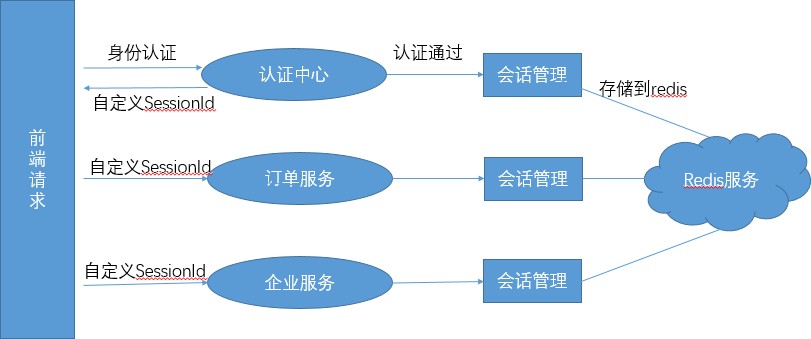
会话管理器可以指定sessionId的生成以及获取方式。通过sessionDao完成模拟session存入,取出等操作
Shiro结合redis的统一会话管理
步骤分析

构建环境
使用开源组件Shiro-Redis可以方便的构建shiro与redis的整合工程。
<dependency>
<groupId>org.crazycake</groupId>
<artifactId>shiro-redis</artifactId>
<version>3.0.0</version>
</dependency>在springboot配置文件中添加redis配置
redis:
host: 127.0.0.1
port: 6379自定义shiro会话管理器
package cn.itcast.shiro.session;
import org.apache.shiro.web.servlet.ShiroHttpServletRequest;
import org.apache.shiro.web.session.mgt.DefaultWebSessionManager;
import org.apache.shiro.web.util.WebUtils;
import org.springframework.util.StringUtils;
import javax.servlet.ServletRequest;
import javax.servlet.ServletResponse;
import java.io.Serializable;
/**
* 自定义的sessionManager
*/
public class CustomSessionManager extends DefaultWebSessionManager {
/**
* 头信息中具有sessionid
* 请求头:Authorization: sessionid
*
* 指定sessionId的获取方式
*/
protected Serializable getSessionId(ServletRequest request, ServletResponse response) {
//获取请求头Authorization中的数据
String id = WebUtils.toHttp(request).getHeader("Authorization");
if(StringUtils.isEmpty(id)) {
//如果没有携带,生成新的sessionId
return super.getSessionId(request,response);
}else{
//返回sessionId;
request.setAttribute(ShiroHttpServletRequest.REFERENCED_SESSION_ID_SOURCE, "header");
request.setAttribute(ShiroHttpServletRequest.REFERENCED_SESSION_ID, id);
request.setAttribute(ShiroHttpServletRequest.REFERENCED_SESSION_ID_IS_VALID, Boolean.TRUE);
return id;
}
}
}
配置Shiro基于redis的会话管理
在Shiro配置类 配置cn.itcast.shiro.ShiroConfiguration
- 配置shiro的RedisManager,通过shiro-redis包提供的RedisManager统一对redis操作
@Value("${spring.redis.host}")
private String host;
@Value("${spring.redis.port}")
private int port;
//配置shiro redisManager
public RedisManager redisManager() {
RedisManager redisManager = new RedisManager();
redisManager.setHost(host);
redisManager.setPort(port);
return redisManager;
}- Shiro内部有自己的本地缓存机制,为了更加统一方便管理,全部替换redis实现
//配置Shiro的缓存管理器
//使用redis实现
public RedisCacheManager cacheManager() {
RedisCacheManager redisCacheManager = new RedisCacheManager();
redisCacheManager.setRedisManager(redisManager());
return redisCacheManager;
}- 配置SessionDao,使用shiro-redis实现的基于redis的sessionDao
/**
* RedisSessionDAO shiro sessionDao层的实现 通过redis
* 使用的是shiro-redis开源插件
*/
public RedisSessionDAO redisSessionDAO() {
RedisSessionDAO redisSessionDAO = new RedisSessionDAO();
redisSessionDAO.setRedisManager(redisManager());
return redisSessionDAO;
}- 配置会话管理器,指定sessionDao的依赖关系
/**
* 3.会话管理器
*/
public DefaultWebSessionManager sessionManager() {
CustomSessionManager sessionManager = new CustomSessionManager();
sessionManager.setSessionDAO(redisSessionDAO());
return sessionManager;
}- 统一交给SecurityManager管理
//配置安全管理器
@Bean
public SecurityManager securityManager(CustomRealm realm) {
//使用默认的安全管理器
DefaultWebSecurityManager securityManager = new DefaultWebSecurityManager(realm);
// 自定义session管理 使用redis
securityManager.setSessionManager(sessionManager());
// 自定义缓存实现 使用redis
securityManager.setCacheManager(cacheManager());
//将自定义的realm交给安全管理器统一调度管理
securityManager.setRealm(realm);
return securityManager;
}SaaS-HRM中的认证授权
需求分析
实现基于Shiro的SaaS平台的统一权限管理。我们的SaaS-HRM系统是基于微服务构建,所以在使用Shiro鉴权的时候,就需要将认证信息保存到统一的redis服务器中完成。这样,每个微服务都可以通过指定cookie中的sessionid获取公共的认证信息。
搭建环境
导入依赖
父工程导入Shiro的依赖
<dependency>
<groupId>org.apache.shiro</groupId>
<artifactId>shiro-spring</artifactId>
<version>1.3.2</version>
</dependency>
<dependency>
<groupId>org.apache.shiro</groupId>
<artifactId>shiro-core</artifactId>
<version>1.3.2</version>
</dependency>
<dependency>
<groupId>org.crazycake</groupId>
<artifactId>shiro-redis</artifactId>
<version>3.0.0</version>
</dependency>配置值对象
不需要存入redis太多的用户数据,和获取用户信息的返回对象一致即可,需要实现AuthCachePrincipali接口
@Setter
@Getter
public class ProfileResult implements Serializable,AuthCachePrincipal {
private String mobile;
private String username;
private String company;
private String companyId;
private Map<String,Object> roles = new HashMap<>();
//省略
}骚戴理解:通过将authcacheprincipal接口的实现添加到profileresult类中,该类的实例对象可以用作身份验证系统的凭据,并缓存在身份验证高速缓存中,以提高身份验证效率。同时可序列化则表示它可以被网络传输或者持久化到数据库中。简单来说就是使用shiro认证,也就是登录校验的时候会传入一个安全数据存储到shiro的会话中,其实就是存在内存中,然后这个安全数据是对象的话要实现authcacheprincipal这个接口!!!看下面的代码就知道了ProfileResult就是这个安全数据!!!
//认证方法
protected AuthenticationInfo doGetAuthenticationInfo(AuthenticationToken authenticationToken) throws AuthenticationException {
//1.获取用户的手机号和密码
UsernamePasswordToken upToken = (UsernamePasswordToken) authenticationToken;
String mobile = upToken.getUsername();
String password = new String( upToken.getPassword());
//2.根据手机号查询用户
User user = userService.findByMobile(mobile);
//3.判断用户是否存在,用户密码是否和输入密码一致
if(user != null && user.getPassword().equals(password)) {
//4.构造安全数据并返回(安全数据:用户基本数据,权限信息 profileResult)
ProfileResult result = null;
if("user".equals(user.getLevel())) {
result = new ProfileResult(user);
}else {
Map map = new HashMap();
if("coAdmin".equals(user.getLevel())) {
map.put("enVisible","1");
}
List<Permission> list = permissionService.findAll(map);
result = new ProfileResult(user,list);
}
//构造方法:安全数据,密码,realm域名
SimpleAuthenticationInfo info = new SimpleAuthenticationInfo(result,user.getPassword(),this.getName());
return info;
}
//返回null,会抛出异常,标识用户名和密码不匹配
return null;
}
}配置未认证controller
为了在多个微服务中使用,配置公共的未认证未授权的Controller
@RestController
@CrossOrigin
public class ErrorController {
//公共错误跳转
@RequestMapping(value="autherror")
public Result autherror(int code) {
return code ==1?new Result(ResultCode.UNAUTHENTICATED):new Result(ResultCode.UNAUTHORISE);
}
}骚戴理解:上面这个控制器是跟下面配置类中的两行代码并肩作战的,也就是如果校验权限发现有权限就会跳转到/autherror?code=1,权限不足就跳到/autherror?code=2
//3.通用配置(跳转登录页面,未授权跳转的页面)
filterFactory.setLoginUrl("/autherror?code=1");//跳转url地址
filterFactory.setUnauthorizedUrl("/autherror?code=2");//未授权的url自定义的公共异常处理器
package com.ihrm.common.handler;
import com.ihrm.common.entity.Result;
import com.ihrm.common.entity.ResultCode;
import com.ihrm.common.exception.CommonException;
import org.apache.shiro.authz.AuthorizationException;
import org.springframework.web.bind.annotation.ControllerAdvice;
import org.springframework.web.bind.annotation.ExceptionHandler;
import org.springframework.web.bind.annotation.ResponseBody;
import javax.servlet.http.HttpServletRequest;
import javax.servlet.http.HttpServletResponse;
/**
* 自定义的公共异常处理器
* 1.声明异常处理器
* 2.对异常统一处理
*/
@ControllerAdvice
public class BaseExceptionHandler {
@ExceptionHandler(value = Exception.class)
@ResponseBody
public Result error(HttpServletRequest request, HttpServletResponse response,Exception e) {
e.printStackTrace();
if(e.getClass() == CommonException.class) {
//类型转型
CommonException ce = (CommonException) e;
Result result = new Result(ce.getResultCode());
return result;
}else{
Result result = new Result(ResultCode.SERVER_ERROR);
return result;
}
}
@ExceptionHandler(value = AuthorizationException.class)
@ResponseBody
public Result error(HttpServletRequest request, HttpServletResponse response,AuthorizationException e) {
return new Result(ResultCode.UNAUTHORISE);
}
}
骚戴理解:因为这里是用的Shiro注解鉴权,如果鉴权失败是会抛出异常的,所以需要通过这个异常处理器来统一处理这些异常
自定义realm授权
ihrm-common模块下创建公共的认证与授权realm,需要注意的是,此realm只处理授权数据即可,认证方法需要在登录模块中补全。
package com.ihrm.common.shiro.realm;
import com.ihrm.domain.system.response.ProfileResult;
import org.apache.shiro.authc.AuthenticationException;
import org.apache.shiro.authc.AuthenticationInfo;
import org.apache.shiro.authc.AuthenticationToken;
import org.apache.shiro.authz.AuthorizationInfo;
import org.apache.shiro.authz.SimpleAuthorizationInfo;
import org.apache.shiro.realm.AuthorizingRealm;
import org.apache.shiro.subject.PrincipalCollection;
import java.util.Set;
//公共的realm:获取安全数据,构造权限信息
public class IhrmRealm extends AuthorizingRealm {
public void setName(String name) {
super.setName("ihrmRealm");
}
//授权方法
protected AuthorizationInfo doGetAuthorizationInfo(PrincipalCollection principalCollection) {
//1.获取安全数据
ProfileResult result = (ProfileResult)principalCollection.getPrimaryPrincipal();
//2.获取权限信息
Set<String> apisPerms = (Set<String>)result.getRoles().get("apis");
//3.构造权限数据,返回值
SimpleAuthorizationInfo info = new SimpleAuthorizationInfo();
info.setStringPermissions(apisPerms);
return info;
}
//认证方法
protected AuthenticationInfo doGetAuthenticationInfo(AuthenticationToken authenticationToken) throws AuthenticationException {
return null;
}
}
骚戴理解:上面代码很容易漏掉setName这个方法。setname方法用于设置此authorizingrealm的名称。在该实现中,setname重写了父类的setname方法并强制将名称设置为"ihrmrealm"。该名称通常用于唯一标识该领域对象(realm)的身份,并在调用该对象时由框架使用。
自定义会话管理器
之前的程序使用jwt的方式进行用户认证,前端发送后端的是请求头中的token。为了适配之前的程序,在shiro中需要更改sessionId的获取方式。很好解决,在shiro的会话管理中,可以轻松的使用请求头中的内容作为sessionid
package com.ihrm.common.shiro.session;
import org.apache.shiro.web.servlet.ShiroHttpServletRequest;
import org.apache.shiro.web.session.mgt.DefaultWebSessionManager;
import org.apache.shiro.web.util.WebUtils;
import org.springframework.util.StringUtils;
import javax.servlet.ServletRequest;
import javax.servlet.ServletResponse;
import java.io.Serializable;
public class CustomSessionManager extends DefaultWebSessionManager {
/**
* 头信息中具有sessionid
* 请求头:Authorization: sessionid
*
* 指定sessionId的获取方式
*/
protected Serializable getSessionId(ServletRequest request, ServletResponse response) {
//获取请求头Authorization中的数据
String id = WebUtils.toHttp(request).getHeader("Authorization");
if(StringUtils.isEmpty(id)) {
//如果没有携带,生成新的sessionId
return super.getSessionId(request,response);
}else{
//请求头信息:bearer sessionid
id = id.replaceAll("Bearer ","");
//返回sessionId;
request.setAttribute(ShiroHttpServletRequest.REFERENCED_SESSION_ID_SOURCE, "header");
request.setAttribute(ShiroHttpServletRequest.REFERENCED_SESSION_ID, id);
request.setAttribute(ShiroHttpServletRequest.REFERENCED_SESSION_ID_IS_VALID, Boolean.TRUE);
return id;
}
}
}用户认证
配置用户登录
//用户名密码登录
@RequestMapping(value="/login",method = RequestMethod.POST)
public Result login(@RequestBody Map<String,String> loginMap) {
String mobile = loginMap.get("mobile");
String password = loginMap.get("password");
try {
//1.构造登录令牌 UsernamePasswordToken
//加密密码
password = new Md5Hash(password,mobile,3).toString(); //1.密码,盐,加密次数
UsernamePasswordToken upToken = new UsernamePasswordToken(mobile,password);
//2.获取subject
Subject subject = SecurityUtils.getSubject();
//3.调用login方法,进入realm完成认证
subject.login(upToken);
//4.获取sessionId
String sessionId = (String)subject.getSession().getId();
//5.构造返回结果
return new Result(ResultCode.SUCCESS,sessionId);
}catch (Exception e) {
return new Result(ResultCode.MOBILEORPASSWORDERROR);
}
}骚戴理解:new Md5Hash(password,mobile,3)里面的三个参数分别是密码,盐(通过是用用户名作为盐值),加密次数。所谓的盐其实就是字符串,md5加盐就是数字和字符串组成的密文
修改profile方法
/**
* 用户登录成功之后,获取用户信息
* 1.获取用户id
* 2.根据用户id查询用户
* 3.构建返回值对象
* 4.响应
*/
@RequestMapping(value="/profile",method = RequestMethod.POST)
public Result profile(HttpServletRequest request) throws Exception {
//获取session中的安全数据
Subject subject = SecurityUtils.getSubject();
//1.subject获取所有的安全数据集合
PrincipalCollection principals = subject.getPrincipals();
//2.获取安全数据
ProfileResult result = (ProfileResult)principals.getPrimaryPrincipal();
// String userid = claims.getId();
// //获取用户信息
// User user = userService.findById(userid);
// //根据不同的用户级别获取用户权限
//
// ProfileResult result = null;
//
// if("user".equals(user.getLevel())) {
// result = new ProfileResult(user);
// }else {
// Map map = new HashMap();
// if("coAdmin".equals(user.getLevel())) {
// map.put("enVisible","1");
// }
// List<Permission> list = permissionService.findAll(map);
// result = new ProfileResult(user,list);
// }
return new Result(ResultCode.SUCCESS,result);
}骚戴理解:之前profile方法是用来授权的,由于这个操作已经在UserRealm里实现了,并且把授权后的ProfileResult放到了SimpleAuthenticationInfo里面,所以这里只需要直接取出来返回给前端即可
shiro认证
配置用户登录认证的realm域,只需要继承公共的IhrmRealm补充其中的认证方法即可
public class UserIhrmRealm extends IhrmRealm {
@Override
public void setName(String name) {
super.setName("customRealm");
}
@Autowired
private UserService userService;
//认证方法
protected AuthenticationInfo doGetAuthenticationInfo(AuthenticationToken authenticationToken) throws AuthenticationException {
//1.获取用户的手机号和密码
UsernamePasswordToken upToken = (UsernamePasswordToken) authenticationToken;
String mobile = upToken.getUsername();
String password = new String( upToken.getPassword());
//2.根据手机号查询用户
User user = userService.findByMobile(mobile);
//3.判断用户是否存在,用户密码是否和输入密码一致
if(user != null && user.getPassword().equals(password)) {
//4.构造安全数据并返回(安全数据:用户基本数据,权限信息 profileResult)
ProfileResult result = null;
if("user".equals(user.getLevel())) {
result = new ProfileResult(user);
}else {
Map map = new HashMap();
if("coAdmin".equals(user.getLevel())) {
map.put("enVisible","1");
}
List<Permission> list = permissionService.findAll(map);
result = new ProfileResult(user,list);
}
//构造方法:安全数据,密码,realm域名
SimpleAuthenticationInfo info = new SimpleAuthenticationInfo(result,user.getPassword(),this.getName());
return info;
}
//返回null,会抛出异常,标识用户名和密码不匹配
return null;
}
}骚戴理解:认证即是登录校验,通过查询数据库校验用户账号信息,然后封装该用户的所有权限,也就是安全数据ProfileResult对象,SimpleAuthenticationInfo的三个参数分别是安全数据,密码,realm域名
SimpleAuthenticationInfo info = new SimpleAuthenticationInfo(result,user.getPassword(),this.getName());骚戴理解:simpleauthenticationinfo 类用于表示身份验证信息。 在构造时,它接受三个参数:
- result: 身份验证的有效用户对象。可以是来自数据库或其他数据源中的实际对象。
- user.getpassword(): 表示有效用户对象密码的字符串。这通常来自数据库或其他数据源。
- this.getname(): 是一个字符串,表示realm的名称(在shiro中具有定义)。该字符串在配置文件中指定,并被用于登录认证和授权过程中。
因此,语句simpleauthenticationinfo info = new simpleauthenticationinfo(result, user.getpassword(), this.getname()); 的作用是创建一个包含三个参数值的 simpleauthenticationinfo 对象 info,用于表示用户的身份验证信息。其中,result 代表已验证的用户的身份,user.getpassword() 代表已验证用户的密码,this.getname()代表realm的名称。这个对象可以由shiro框架的其他组件、方法或类进行使用或处理。
获取session数据
baseController中使用shiro从redis中获取认证数据
//使用shiro获取
@ModelAttribute
public void setResAnReq(HttpServletRequest request,HttpServletResponse response) {
this.request = request;
this.response = response;
//获取session中的安全数据
Subject subject = SecurityUtils.getSubject();
//1.subject获取所有的安全数据集合
PrincipalCollection principals = subject.getPrincipals();
if(principals != null && !principals.isEmpty()){
//2.获取安全数据
ProfileResult result = (ProfileResult)principals.getPrimaryPrincipal();
this.companyId = result.getCompanyId();
this.companyName = result.getCompany();
}
}用户授权
在需要使用的接口上配置@RequiresPermissions("API-USER-DELETE")
配置
构造shiro的配置类
package com.ihrm.system;
import com.ihrm.common.shiro.realm.IhrmRealm;
import com.ihrm.common.shiro.session.CustomSessionManager;
import com.ihrm.system.shiro.realm.UserRealm;
import org.apache.shiro.mgt.SecurityManager;
import org.apache.shiro.spring.security.interceptor.AuthorizationAttributeSourceAdvisor;
import org.apache.shiro.spring.web.ShiroFilterFactoryBean;
import org.apache.shiro.web.mgt.DefaultWebSecurityManager;
import org.apache.shiro.web.session.mgt.DefaultWebSessionManager;
import org.crazycake.shiro.RedisCacheManager;
import org.crazycake.shiro.RedisManager;
import org.crazycake.shiro.RedisSessionDAO;
import org.springframework.beans.factory.annotation.Value;
import org.springframework.context.annotation.Bean;
import org.springframework.context.annotation.Configuration;
import java.util.LinkedHashMap;
import java.util.Map;
@Configuration
public class ShiroConfiguration {
//1.创建realm
@Bean
public IhrmRealm getRealm() {
return new UserRealm();
}
//2.创建安全管理器
@Bean
public SecurityManager getSecurityManager(IhrmRealm realm) {
DefaultWebSecurityManager securityManager = new DefaultWebSecurityManager();
securityManager.setRealm(realm);
//将自定义的会话管理器注册到安全管理器中
securityManager.setSessionManager(sessionManager());
//将自定义的redis缓存管理器注册到安全管理器中
securityManager.setCacheManager(cacheManager());
return securityManager;
}
//3.配置shiro的过滤器工厂
/**
* 再web程序中,shiro进行权限控制全部是通过一组过滤器集合进行控制
*
*/
@Bean
public ShiroFilterFactoryBean shiroFilter(SecurityManager securityManager) {
//1.创建过滤器工厂
ShiroFilterFactoryBean filterFactory = new ShiroFilterFactoryBean();
//2.设置安全管理器
filterFactory.setSecurityManager(securityManager);
//3.通用配置(跳转登录页面,未授权跳转的页面)
filterFactory.setLoginUrl("/autherror?code=1");//跳转url地址
filterFactory.setUnauthorizedUrl("/autherror?code=2");//未授权的url
//4.设置过滤器集合
Map<String,String> filterMap = new LinkedHashMap<>();
//anon -- 匿名访问
filterMap.put("/sys/login","anon");
filterMap.put("/autherror","anon");
//注册
//authc -- 认证之后访问(登录)
filterMap.put("/**","authc");
//perms -- 具有某中权限 (使用注解配置授权)
filterFactory.setFilterChainDefinitionMap(filterMap);
return filterFactory;
}
@Value("${spring.redis.host}")
private String host;
@Value("${spring.redis.port}")
private int port;
/**
* 1.redis的控制器,操作redis
*/
public RedisManager redisManager() {
RedisManager redisManager = new RedisManager();
redisManager.setHost(host);
redisManager.setPort(port);
return redisManager;
}
/**
* 2.sessionDao
*/
public RedisSessionDAO redisSessionDAO() {
RedisSessionDAO sessionDAO = new RedisSessionDAO();
sessionDAO.setRedisManager(redisManager());
return sessionDAO;
}
/**
* 3.会话管理器
*/
public DefaultWebSessionManager sessionManager() {
CustomSessionManager sessionManager = new CustomSessionManager();
sessionManager.setSessionDAO(redisSessionDAO());
//禁用cookie
sessionManager.setSessionIdCookieEnabled(false);
//禁用url重写 url;jsessionid=id
sessionManager.setSessionIdUrlRewritingEnabled(false);
return sessionManager;
}
/**
* 4.缓存管理器
*/
public RedisCacheManager cacheManager() {
RedisCacheManager redisCacheManager = new RedisCacheManager();
redisCacheManager.setRedisManager(redisManager());
return redisCacheManager;
}
//开启对shior注解的支持
@Bean
public AuthorizationAttributeSourceAdvisor authorizationAttributeSourceAdvisor(SecurityManager securityManager) {
AuthorizationAttributeSourceAdvisor advisor = new AuthorizationAttributeSourceAdvisor();
advisor.setSecurityManager(securityManager);
return advisor;
}
}
骚戴理解:以下代码是向上转型,如果UserRealm没有这个方法就调用父类的,有的话就会调用UserRealm自己的方法,这样的写应该是为了把这个Realm拆开,一个用来认证,一个用来授权
@Bean
public IhrmRealm getRealm() {
return new UserRealm();
}这里要把之前的Jwt的拦截器配置文件给注释掉!注释@Configuration就好

